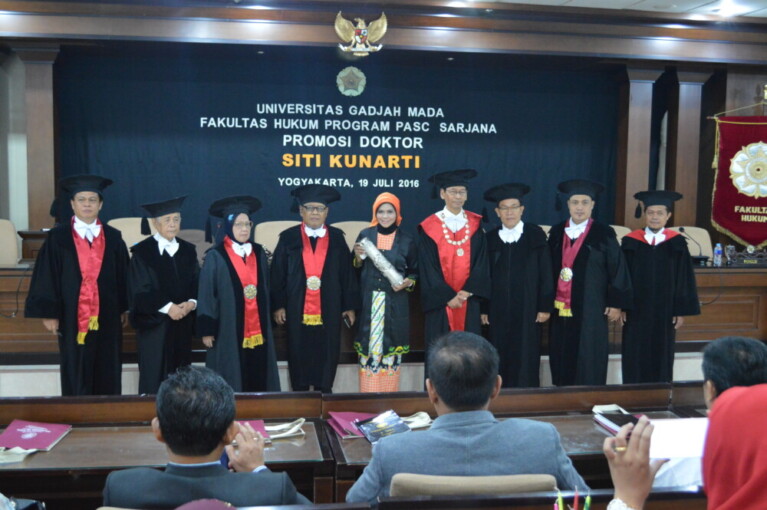
Industrial relations that exist between workers and business owners are vulnerable to various conflicts, one of which is caused by inequalities in the relationship between the two. Discord is something that is hard to avoid, but what needs to be considered is how the dispute can be resolved peacefully by having a solution that does not interfere with the economic stability and the interests of society.
This is delivered by a lecturer of the Faculty of Law, Universitas Jenderal Soedirman Purwokerto, Siti Kunarti, SH, MH, at her open examination of doctoral program in the Faculty of Law, Tuesday (19/7). In her dissertation she analyzes and assesses the existence of the Industrial Relations Court (PHI) in the judicial system in Indonesia.
“PHI’s existence as a special court under the general court was only approximately 9 years, but there already has been a lot of criticism and problems,”she said.
The criticism raised against PHI is related to the slow pace of resolution efforts to the Supreme Court. In fact, the existence of the PHI is expected to achieve rapid administration of justice by referring to the substantial justice or substantive law contained in the Act no. 2 of 2004 which sets time limits that must be obeyed by the judiciary, which is a maximum of 50 working days in the first level and a maximum of 30 days at the Supreme Court level.
Moreover, according to Siti, there are institutions such as the PHI which does not necessarily guarantee that the workers can fight for justice with ease. The judges’ verdict that is based on the normative clauses make labor rights are often overlooked. Workers spend energy, time, and extra cost to fight for their rights. Therefore, it is not surprising that business players choose to handle the disputes out of court.
“In fact, the practice of resolving industrial disputes in litigation through PHI institutions have not been able to embrace the common interest. The tendency leads to new problems, slow progress, costly and unresponsive,” she explained.
Related to this issue, she mentioned some dispute settlement solutions that can deliver justice. The solution is through bipartite non-litigation, mediation, conciliation, and arbitration with the principle of consensus between employers and workers in accordance with local wisdom and by placing the dignity of similar workers with that of the owners.
Therefore, she suggested the strengthening of the institution of mediation, conciliation and arbitration primarily as the highest institution to be done immediately. This step is a last resort in resolving industrial disputes by recruiting independent and professional human resources in decision-making, as well as improving communication in industrial relations.
The last but not least is the development of communication of workers and business owners as the key in fostering harmony in industrial relations,” she added. (UGM/adelily)


